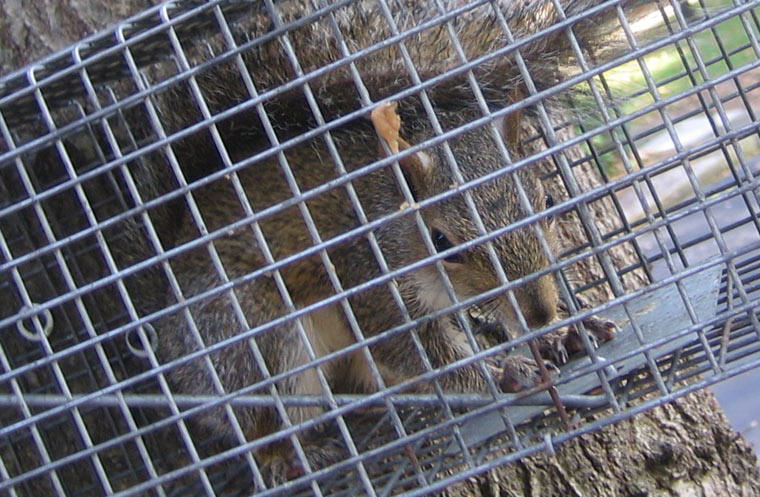-
info@aaanimalcontrol.com
Call us for help in your town
Humane Wildlife Education
How to identify squirrel tracks
Need squirrel removal in your hometown? We service over 500 USA locations! Click here to hire us in your town and check prices- updated for year 2020.
Squirrels are quite fast and nippy little creatures, so there's a good chance you'll hear this animal, or even signs of it, before you spot the animal itself. There are a number of signs of a squirrel invasion, and these squirrel tracks can help you out in a number of ways.

If you weren't sure what animal problem you have, tracking and watching for signs will soon give you a good idea.
Squirrel tracks, once identified, can provide you with a wealth of information. Following the tracks could lead you right to where the animals are entering your home, and could even make you aware of patches of damage you didn't know about. You can also get a good idea of what is attracting the animal to your property, giving you a head start when it comes to trying to get rid of it again.
Squirrel tracks usually start in the trees around your home. You may see nests starting to form, among the branches or in the tree hollows, but it won't be birds that frequent them. Instead, it'll be bushy-tailed squirrels.
If you're lucky, you may spot the squirrels running around in your garden, and this will usually be scampering up and down tree trunks, as well as along the branches, along power lines, and also along the tops of wooden fences. You could spot squirrels on the roof, and if this is the case, you need to open your mind to the idea that you could have a nest of squirrels in the chimney.
Seeing squirrels running around is often a sign that the population in that area is high, and you are therefore more likely to encounter infestation problems. If you see squirrels fighting, you have territory issues on your hands, another sign that the population is very high.
Squirrels are chewing animals, so there's a very good chance that you'll see evidence of this in the places that the animals frequent the most. They will chew tree bark, garden plants, seeds and nuts from bird feeders, garbage left in the trash can, and more, and you will likely see chewing evidence in all of these places.
Small holes or divots in your lawn could also be caused by invading squirrels. They can dig just as well as they can chew, which does not bode well for human residences.
Just as with most other wild critters, squirrels will leave urine and droppings as physical signs that they have been to visit. Squirrel droppings could look like rat droppings, and smaller squirrels will leave similar sized droppings to smaller rodents, such as mice. You will generally find that the droppings of these bushy-tailed animals are between half a centimeter to a centimeter in length, and are left randomly scattered around. They leave their waste as they run, just like rats do. Out in the wild, squirrels that spend a lot of their time in the trees will often have latrine-style sections, usually in the hollows of trees, and other animals that also use a latrine system are raccoons and foxes. The various wild animals will often use each other's latrines in a bid to establish territories, so scientists believe.
Squirrels leave lots of little signs that they've been hanging around, although you are less likely to see little paw prints. If the floor is dusty you may see prints, or in moist soil and surrounding surfaces.
For more information, you may want to click on one of these guides that I wrote:
How much does squirrel removal cost? - get the lowdown on prices.
How to get rid of squirrels - my main squirrel removal info guide.
Example squirrel trapping photographs - get do-it-yourself ideas.
Squirrel job blog - learn from great examples of squirrel jobs I've done.
squirrels in the attic


















